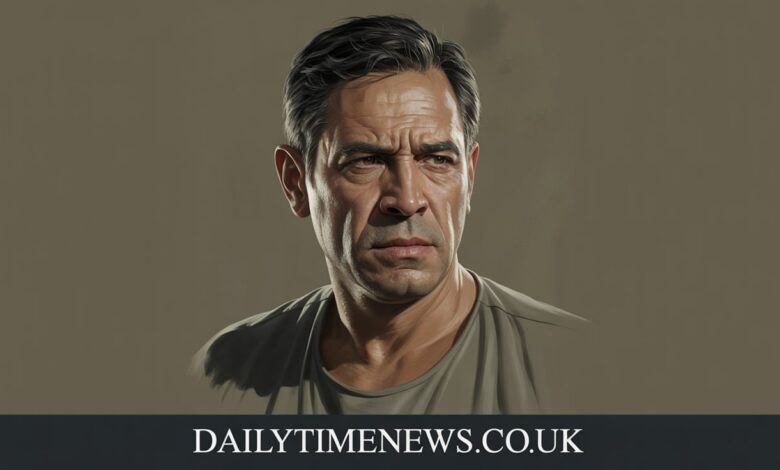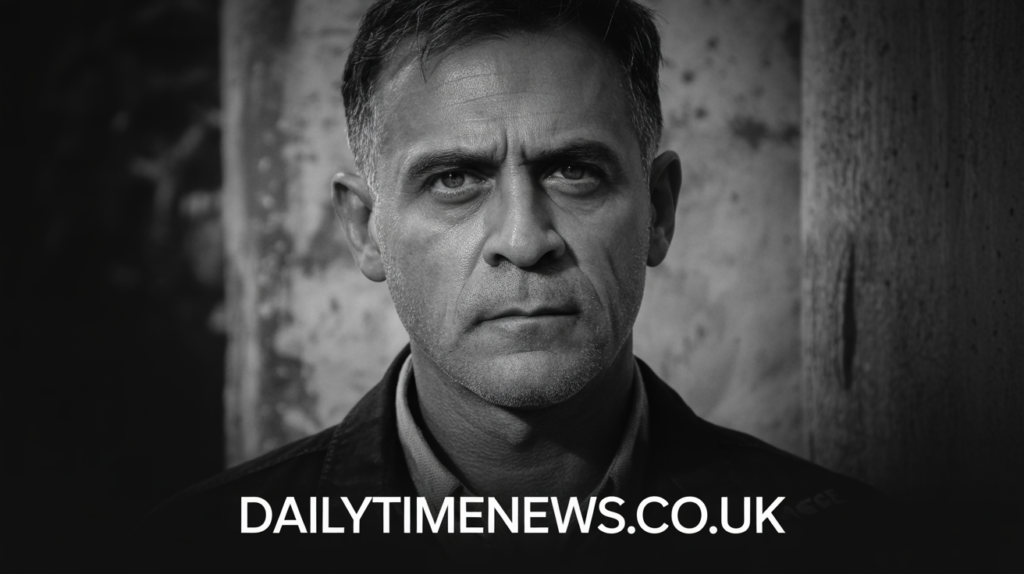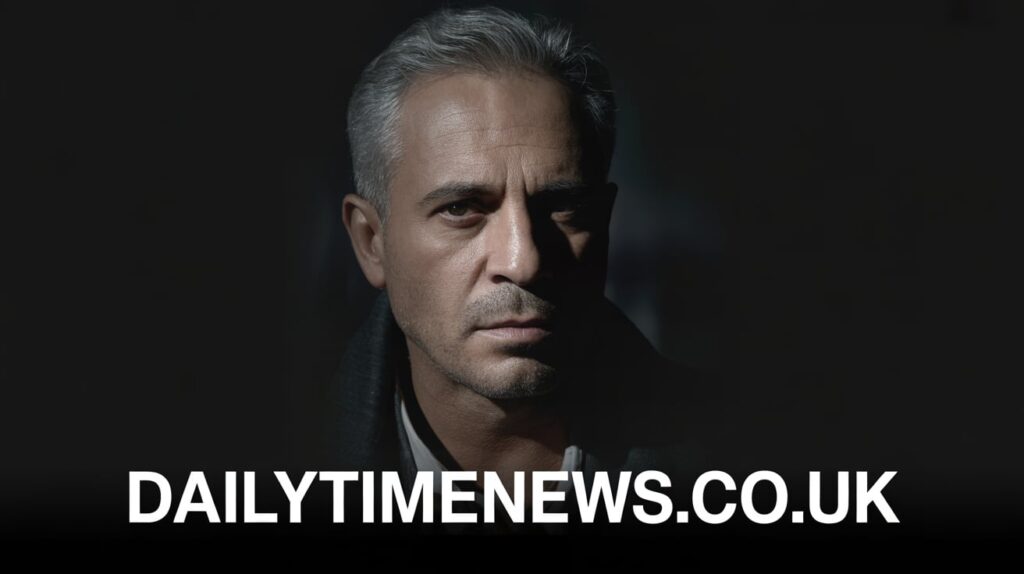Rafael Caro Quintero: The Shocking Truth About Narcos

Introduction
Imagine a man so powerful that his actions triggered an international manhunt lasting decades. Rafael Caro Quintero is that man. His name sends chills through law enforcement agencies worldwide. He’s not just another drug trafficker. He’s the godfather who helped build Mexico’s modern drug empire.
Rafael Caro Quintero cofounded the Guadalajara Cartel in the 1980s. This organization changed drug trafficking forever. It introduced industrial-scale marijuana cultivation and sophisticated smuggling routes. The violence and corruption that plague Mexico today can be traced back to decisions made during Caro Quintero’s reign.
But what makes his story truly remarkable is what happened after his arrest. A shocking prison release. A years-long manhunt. A recapture that made headlines globally. This article explores the life, crimes, and legacy of one of the world’s most wanted men. You’ll understand how one person’s actions shaped an entire era of the drug war.
The Early Life of Rafael Caro Quintero
Growing Up in Poverty
Rafael Caro Quintero was born on October 3, 1952, in Badiraguato, Sinaloa, Mexico. This region is known as the cradle of Mexican drug trafficking. Poverty defined his childhood. His family struggled to survive in the rugged mountains of Sinaloa.
Like many poor rural Mexicans, Caro Quintero saw few legitimate opportunities. The region’s geography made traditional farming difficult. But the climate was perfect for growing marijuana and opium poppies. Drug cultivation offered an escape from poverty.
Young Rafael entered the drug trade as a teenager. He started small, working in marijuana fields. But he was ambitious and intelligent. He quickly recognized opportunities that others missed.
The Path to Drug Trafficking
By his early twenties, Caro Quintero had moved beyond fieldwork. He began organizing his own marijuana operations. His approach was different from traditional traffickers. He thought bigger and planned better.
The 1970s were transformative years for Mexican drug trafficking. American demand for marijuana was exploding. Mexican traffickers were perfectly positioned to supply that demand. Caro Quintero seized this opportunity with both hands.
He built relationships with other ambitious traffickers. These connections would later form the foundation of the Guadalajara Cartel. His reputation grew as someone who could move product efficiently and handle money wisely.
The Rise of the Guadalajara Cartel
Founding Mexico’s First Super Cartel
In the late 1970s and early 1980s, Rafael Caro Quintero joined forces with Miguel Ángel Félix Gallardo and Ernesto Fonseca Carrillo. Together, they created the Guadalajara Cartel. This wasn’t just another drug trafficking organization. It was Mexico’s first super cartel.
The Guadalajara Cartel revolutionized the drug trade. They brought corporate-style management to what had been a disorganized industry. They divided territories. They established clear supply chains. They corrupted officials at every level of government.
Rafael Caro Quintero was responsible for marijuana operations. He didn’t just grow more marijuana. He transformed how it was cultivated. His innovations would generate billions of dollars.
The Rancho Búfalo Operation
Caro Quintero’s masterstroke was Rancho Búfalo. This massive marijuana plantation in Chihuahua became legendary in drug trafficking history. The scale was unprecedented. Estimates suggest the ranch covered between 1,000 and 2,500 acres.
The operation employed thousands of workers. It used advanced irrigation systems. Caro Quintero invested millions in infrastructure. The ranch produced marijuana worth billions of dollars annually. Nothing like it had ever existed before.
American law enforcement discovered Rancho Búfalo in 1984. The raid destroyed approximately 10,000 tons of marijuana. The street value was estimated at $8 billion. It remains one of the largest drug busts in history.
Wealth Beyond Imagination
The money flowing through the Guadalajara Cartel was staggering. Rafael Caro Quintero became fabulously wealthy. He owned ranches, homes, and businesses throughout Mexico. He lived like royalty while millions of Mexicans struggled in poverty.
The cartel’s wealth translated into power. They corrupted police, military officers, and politicians. This corruption allowed them to operate with near impunity. The Mexican government often seemed powerless against them.
Caro Quintero enjoyed the lifestyle his wealth afforded. Expensive cars. Beautiful women. Lavish parties. But this high life would eventually come crashing down in the most dramatic way possible.

The Murder That Changed Everything
Who Was Kiki Camarena?
Enrique “Kiki” Camarena was a DEA agent working in Guadalajara. He was dedicated, courageous, and effective. His investigations were causing serious problems for the cartel. Camarena was instrumental in discovering Rancho Búfalo.
The destruction of Rancho Búfalo cost Rafael Caro Quintero hundreds of millions of dollars. It was a devastating blow to his operations. Caro Quintero wanted revenge. He wanted to send a message to American law enforcement.
In February 1985, Camarena was kidnapped in broad daylight. Mexican police working for the cartel grabbed him off the street. What followed was one of the most horrific crimes in the drug war’s history.
The Torture and Murder
Camarena was taken to a house owned by Rafael Caro Quintero. There, he was tortured for hours. The interrogation was brutal and sadistic. Cartel members wanted to know everything about DEA operations in Mexico.
A doctor was present to keep Camarena alive during the torture. They wanted to extract maximum information before he died. The torture included beatings, burning, and other unspeakable acts. Camarena’s suffering lasted more than 30 hours.
His body was found weeks later in a rural area. The murder shocked both American and Mexican authorities. The brutality was unprecedented. The fact that it targeted a U.S. federal agent changed everything.
The International Response
The United States government reacted with fury. The murder of Kiki Camarena became a cause célèbre. It demonstrated the cartels’ power and their willingness to attack American law enforcement directly.
Operation Leyenda was launched. This massive investigation aimed to bring everyone involved in Camarena’s murder to justice. The DEA devoted enormous resources to finding Rafael Caro Quintero and his associates.
Mexico faced intense pressure from the United States. The bilateral relationship was strained. American authorities demanded action. The Mexican government could no longer ignore or protect the Guadalajara Cartel.
Arrest, Trial, and Imprisonment
The Manhunt
After Camarena’s murder, Rafael Caro Quintero went into hiding. He knew the heat would be intense. Mexican and American authorities were hunting him relentlessly. The comfortable life he’d known was over.
The manhunt lasted only a few weeks. In April 1985, Costa Rican authorities arrested Caro Quintero. He had fled Mexico hoping to find safety. But American pressure was too strong. Costa Rica turned him over to Mexican authorities.
His arrest was major news. It showed that even the most powerful drug lords could be caught. It gave hope that justice might prevail in the war on drugs.
The Trial and Conviction
Rafael Caro Quintero was tried in Mexican court for the murder of Kiki Camarena and other crimes. The evidence against him was substantial. Witnesses placed him at the scene. His involvement was undeniable.
In 1989, he was convicted and sentenced to 40 years in prison. Many observers thought he would die behind bars. The Mexican justice system had seemingly worked. A dangerous criminal was off the streets.
But the story was far from over. Prison in Mexico is different from prison in the United States, especially for wealthy drug lords. Caro Quintero maintained connections and influence even behind bars.
Life in Prison
Mexican prisons have a reputation for corruption. Rafael Caro Quintero reportedly enjoyed special privileges during his incarceration. He had access to luxuries most prisoners could never imagine. Money and influence bought him comfort.
Still, prison was prison. He couldn’t move freely. His empire had crumbled. Other cartels had risen to take the Guadalajara Cartel’s place. The drug trafficking landscape had changed dramatically during his imprisonment.
For 28 years, Caro Quintero remained behind bars. American authorities assumed he would serve his full sentence. They were wrong.
The Shocking Release
The 2013 Court Decision
On August 9, 2013, news broke that shocked law enforcement worldwide. A Mexican court had ordered Rafael Caro Quintero’s release. The justification was a legal technicality. The court claimed he had been tried in the wrong jurisdiction.
The decision was immediately controversial. Many suspected corruption. How could such a dangerous criminal be released on a technicality after serving only 28 years of a 40-year sentence?
American authorities were outraged. The DEA issued statements expressing disbelief and anger. Kiki Camarena’s family was devastated. The release seemed to mock justice and the memory of the murdered agent.
Walking Free
Rafael Caro Quintero walked out of prison a free man. At age 60, he returned to a very different Mexico. The drug war had intensified. Multiple cartels fought brutal battles for territory. Violence had reached epidemic levels.
What would he do with his freedom? Would he retire quietly? Would he return to drug trafficking? These questions obsessed law enforcement agencies. The DEA immediately placed him on their most wanted list.
The Mexican government faced a firestorm of criticism. The United States demanded his immediate re-arrest. But Mexican legal procedures moved slowly. Caro Quintero vanished.
International Warrant and Manhunt
The United States requested Caro Quintero’s extradition. Mexico’s Supreme Court eventually overturned his release and ordered his re-arrest. But by then, he had disappeared. He’d had time to go underground.
The FBI added him to their Ten Most Wanted Fugitives list. The reward for information leading to his capture eventually reached $20 million. It was one of the highest rewards ever offered for a drug trafficker.
For the next nine years, Rafael Caro Quintero remained a ghost. Rumors placed him in various locations. Some said he’d returned to Sinaloa. Others claimed he was living quietly in a different country. Nobody knew for sure.
The 2022 Recapture
The Operation
On July 15, 2022, Mexican marines finally found Rafael Caro Quintero. He was hiding in the mountains of Sinaloa, his home state. The operation was the result of years of intelligence work.
A Mexican Navy helicopter participated in the operation. Tragically, it crashed shortly after the arrest, killing 14 marines. The accident cast a shadow over what should have been a moment of triumph.
The arrest made international headlines. After nine years on the run, one of the world’s most wanted men was back in custody. Justice, it seemed, had finally caught up with him.
Current Status
Rafael Caro Quintero is currently imprisoned in Mexico’s maximum-security Altiplano prison. The United States has renewed its extradition request. Mexican courts are considering whether to send him to face trial in America.
At 72 years old, Caro Quintero faces the prospect of spending his remaining years behind bars. If extradited to the United States, he would almost certainly receive a life sentence. The murder of a federal agent carries severe penalties.
His lawyers are fighting the extradition. They argue he’s already been punished for his crimes. They claim extradition would violate his rights. The legal battle continues.
The Legacy of Rafael Caro Quintero
Impact on the Drug Trade
Rafael Caro Quintero helped create the template for modern Mexican drug cartels. The Guadalajara Cartel’s organizational structure influenced every cartel that followed. The Sinaloa Cartel, Juárez Cartel, and Tijuana Cartel all trace their origins to the organization he helped build.
His industrial approach to marijuana cultivation changed the economics of drug trafficking. The massive profits proved what was possible. Future traffickers learned from his example and built even larger operations.
The corruption networks he established set dangerous precedents. The idea that cartels could buy protection at every level of government became normalized. This corruption continues to plague Mexico today.
The Cost in Human Lives
The violence Rafael Caro Quintero helped unleash has cost hundreds of thousands of lives. The drug war in Mexico has killed more people than many conventional wars. Families have been destroyed. Communities have been devastated.
Kiki Camarena’s murder was just the beginning. The cartel violence that followed has touched nearly every Mexican. The murder rate in some Mexican states rivals war zones. Much of this violence traces back to the drug trafficking networks pioneered during Caro Quintero’s era.
The social cost is incalculable. Entire generations have grown up surrounded by violence. The Mexican justice system struggles to function. Trust in government has eroded. These problems will take decades to resolve.
Lessons for Law Enforcement
The Rafael Caro Quintero case offers important lessons. It shows the challenges of prosecuting powerful criminals in systems plagued by corruption. It demonstrates how legal technicalities can undermine justice. It reveals the importance of international cooperation.
The long manhunt after his release highlighted the resources required to track fugitives with money and connections. Even with $20 million rewards and international cooperation, it took nine years to recapture him. This shows the limitations of law enforcement against wealthy criminals.
The case also demonstrates the importance of extradition treaties. Many believe Caro Quintero would never have been released if he’d been tried in the United States originally. The case strengthened arguments for extraditing high-level traffickers.
What Happens Next?
The Extradition Battle
The legal fight over Rafael Caro Quintero’s extradition could last years. Mexican courts move slowly. His lawyers have multiple avenues for appeal. They will use every legal tool available to prevent his transfer to American custody.
The United States is patient but determined. The murder of Kiki Camarena remains an open wound for the DEA. They want Caro Quintero to face American justice. They want closure for Camarena’s family.
Political considerations also play a role. The extradition is a test of U.S.-Mexican cooperation on security issues. How Mexico handles the case will affect bilateral relations and future cooperation on drug trafficking.
The Future of the Drug War
Rafael Caro Quintero’s story is a chapter in the larger story of the drug war. That war continues with no end in sight. New cartels have replaced the Guadalajara Cartel. Fentanyl has replaced marijuana as the primary concern.
Some argue the drug war has failed. They point to cases like Caro Quintero’s as evidence that the current approach doesn’t work. Decades of enforcement haven’t stopped drug trafficking. Violence continues. Corruption persists.
Others maintain that enforcement must continue. They argue that without prosecution of major traffickers, the situation would be even worse. The debate over drug policy continues in both the United States and Mexico.
Conclusion
Rafael Caro Quintero’s life story reads like fiction, but it’s terrifyingly real. From poverty in Sinaloa to becoming one of the world’s most powerful drug lords, his journey shaped modern drug trafficking. The Guadalajara Cartel he helped create changed Mexico forever.
The murder of Kiki Camarena remains one of the darkest moments in the drug war. It demonstrated the cartels’ brutality and their willingness to directly attack law enforcement. The reverberations from that crime continue decades later.
His shocking release in 2013 and subsequent recapture show the ongoing challenges in fighting organized crime. Corruption, legal technicalities, and vast resources allow powerful criminals to evade justice for years or even decades.
Today, Rafael Caro Quintero sits in prison awaiting his fate. Whether he spends his final years in Mexico or faces trial in the United States, his legacy is secure. He will be remembered as one of the godfathers of Mexican drug trafficking, a man whose decisions affected millions of lives.
What lessons should we draw from his story? How can societies better fight organized crime? These questions remain urgent as the drug war continues. Share your thoughts on how we can break the cycle of violence and corruption that Rafael Caro Quintero helped create.

FAQs
Who is Rafael Caro Quintero? Rafael Caro Quintero is a Mexican drug lord who cofounded the Guadalajara Cartel in the 1980s. He pioneered industrial-scale marijuana cultivation and was convicted of murdering DEA agent Enrique “Kiki” Camarena in 1985.
Why is Rafael Caro Quintero so notorious? Caro Quintero is notorious for several reasons. He helped build Mexico’s first major drug cartel, created massive marijuana operations, and was involved in the torture and murder of DEA agent Kiki Camarena, which shocked the world and intensified the drug war.
How long was Rafael Caro Quintero in prison? He was initially imprisoned from 1985 to 2013, serving 28 years of a 40-year sentence before being controversially released on a legal technicality. After nine years on the run, he was recaptured in 2022 and remains imprisoned.
What was Rancho Búfalo? Rancho Búfalo was a massive marijuana plantation in Chihuahua operated by Rafael Caro Quintero. Covering thousands of acres, it was the largest marijuana cultivation operation ever discovered, producing billions of dollars worth of marijuana before being raided in 1984.
Is Rafael Caro Quintero still alive? Yes, Rafael Caro Quintero is alive and currently imprisoned in Mexico’s maximum-security Altiplano prison. Born in 1952, he is now in his early seventies and faces possible extradition to the United States.
What happened to Kiki Camarena? DEA agent Enrique “Kiki” Camarena was kidnapped, tortured for over 30 hours, and murdered by the Guadalajara Cartel in February 1985. Rafael Caro Quintero was convicted of ordering and participating in the murder, which triggered a massive international investigation.
How much was the reward for Rafael Caro Quintero? The United States offered a $20 million reward for information leading to Caro Quintero’s arrest. This was one of the highest rewards ever offered for a drug trafficker, reflecting his importance to American law enforcement.
Will Rafael Caro Quintero be extradited to the US? The United States has requested his extradition, and the legal process is ongoing. Mexican courts are considering the request. If extradited, he would face trial in the United States for drug trafficking and the murder of a federal agent.
What is the Guadalajara Cartel? The Guadalajara Cartel was Mexico’s first major drug trafficking organization, founded in the late 1970s by Rafael Caro Quintero, Miguel Ángel Félix Gallardo, and Ernesto Fonseca Carrillo. It pioneered modern cartel structure and operations before splintering into multiple organizations.
How was Rafael Caro Quintero finally caught? Mexican marines captured him in July 2022 in the mountains of Sinaloa after a nine-year manhunt. The operation involved extensive intelligence work and coordination between Mexican and American authorities. Tragically, a helicopter involved in the operation crashed, killing 14 marines.
Also Read Dailytimenews.co.uk



